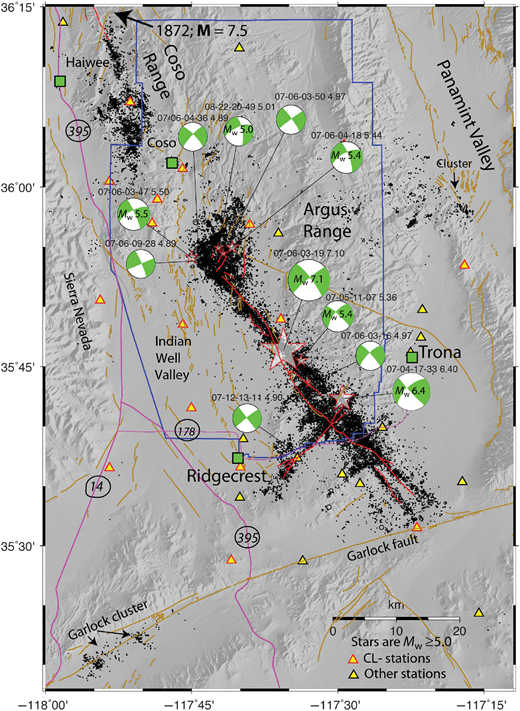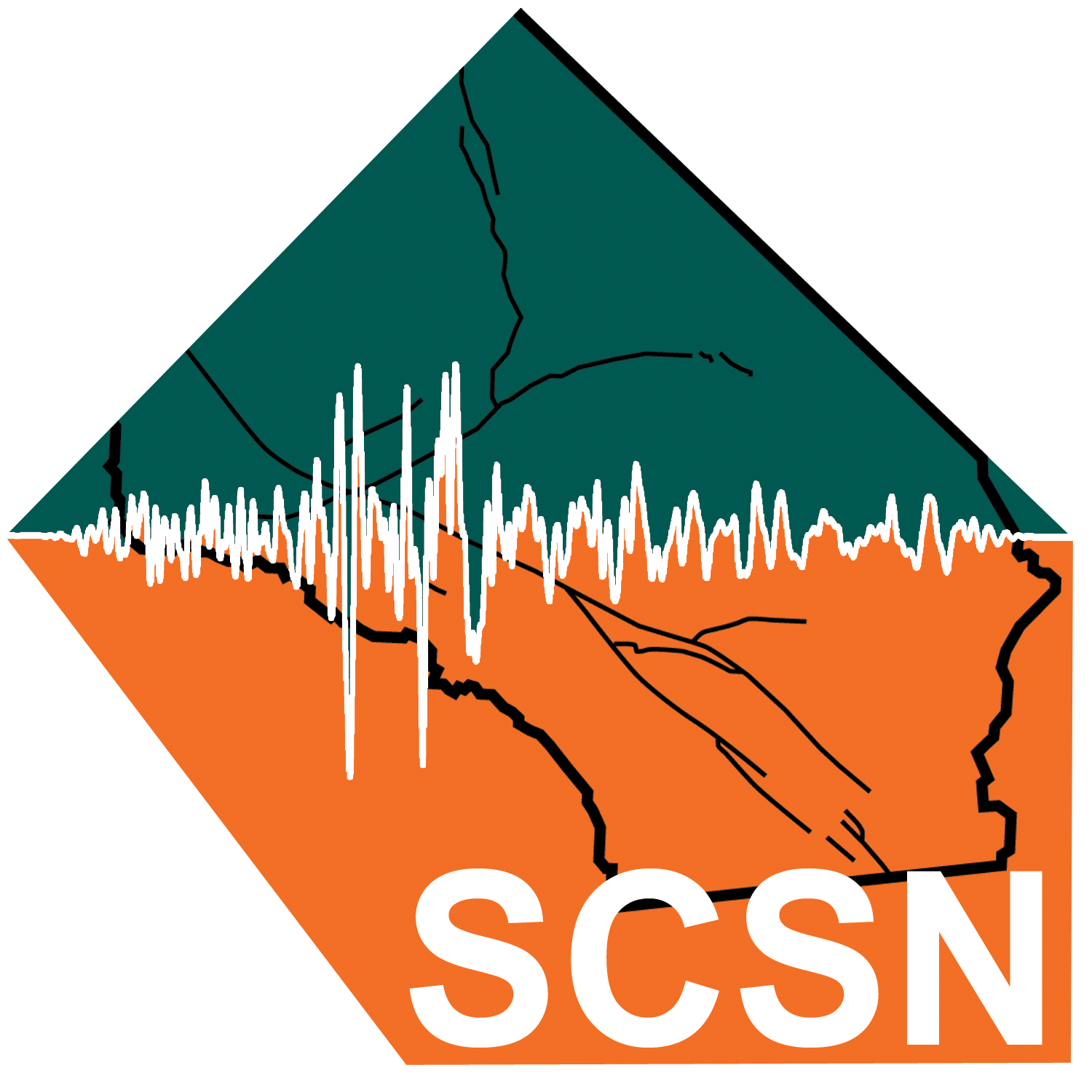Access Data
Special Data Sets
Data Sets for Mw 7.1 Ridgecrest Sequence
The SCEDC has the following links and data sets for use by the research community studying this event. The SCEDC is also archiving and distributing waveform data from portable stations installed by the USGS shortly after the event. Yellow triangles denote seismic stations; CI network stations are outlined in red, and partner permanent and portable stations are outlined in black.
Data available through webservices or STP, or the SCEDC AWS Dataset (Includes DAS dataset).
NOTE: The east and vertical channel names for the ZY data are swapped. This is reflected in the metadata as of April 15, 2020.
Please cite the References (listed below map) when using these datasets.- Southern California Seismic Network (SCSN) Executive Summary
- Template Matching Catalog For Ridgecrest Sequence
- Accelerometer data from CI, CE and CSN accelerometer data for the greater LA Basin. (Fillippitzis, et.al)
- Community Stress Drop Validation Study using the 2019 Ridgecrest Earthquake Sequence

References
- Hauksson, E., C. Yoon, E. Yu, J. R. Andrews, M. Alvarez, R. Bhadha, and V. Thomas (2019). Caltech/USGS Southern California Seismic Network (SCSN) and Southern California Earthquake Data Center (SCEDC): Data Availability for the 2019 Ridgecrest Sequence, Seismol. Res. Lett. 91 (4), 1961–1970, doi: 10.1785/0220190290
- Ross et.al (2019) “Hierarchical interlocked orthogonal faulting in the 2019 Ridgecrest earthquake sequence”, Science, doi: 10.1126/science.aaz0109
- Kohler, M., F. Filippitzis, T. Heaton, R.. Clayton, R. Guy, J. Bunn, M. Chandy, "2019 Ridgecrest Earthquake Reveals Areas of Los Angeles that Amplify Shaking of High-Rises", Seismol. Res. Lett. 91 (6): 3370-3380 doi: 10.1785/0220200170.
- Fillippitzis, F, M. Kohler, T. Heaton, R. Graves, R. Clayton, R. Guy, J. Bunn, and M. Chandy, "Ground Motion Response in Urban Los Angeles from the 2019 Ridgecrest Earthquake Sequence.", Earthquake Spectra. 2021;37(4):2493-2522. doi: 10.1177/87552930211003916
- A Community Stress Drop Validation Study Using the 2019 Ridgecrest Earthquake Dataset. Baltay, A., Abercrombie, R. E., Taira, T. (2021), SSA Annual Meeting 2021.
- Trugman, D. T. (2020), Stress‐Drop and Source Scaling of the 2019 Ridgecrest, California, Earthquake Sequence. Bulletin of the Seismological Society of America 2020; 110 (4): 1859–1871. doi: 10.1785/0120200009
- Baltay, A. S., R. E. Abercrombie, T. Taira, A community stress drop validation study using the 2019 Ridgecrest Earthquake Sequence, Seismological Research Letters (in preparation)






